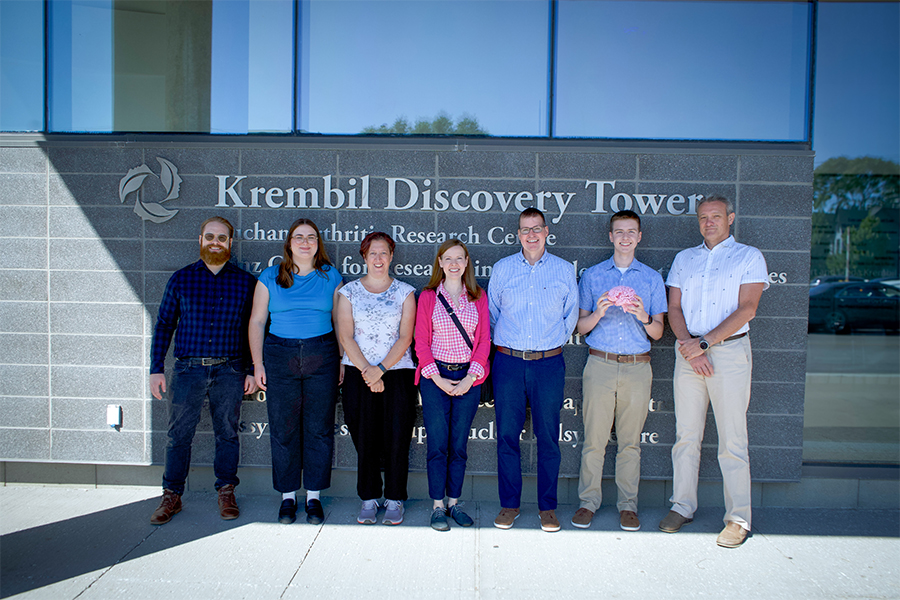When Brett Thompson was diagnosed with brain cancer, it was devastating news for his family. But out of this crisis emerged an extraordinary response from his then-12-year-old son, Sawyer Thompson, who used his love for technology to join the fight against cancer in an unexpected way. Today, their story is inspiring people worldwide to rethink how they, too, can contribute to scientific research, even without specialized knowledge or funds.
Sawyer's journey began with a simple internet search, driven by a desire to help his father in any way he could. “I had no money to donate, no knowledge about how to cure cancer. I felt powerless,” he recalls. His research led him to the World Community Grid, a groundbreaking initiative that allows individuals to contribute spare computing power to support scientists with resource-intensive data processing. Established by IBM in 2004 and later transferred to the Krembil Research Institute in Toronto, this platform leverages the power of thousands of home computers to perform data-heavy computations for a fraction of the time and cost it would take on conventional supercomputers.
Seeing the potential, Sawyer launched Sawyer’s Cancer Fighting Network and enlisted family members, friends, and even strangers online to donate unused computing power. By simply running a background application on their computers, his network of volunteers could help process the massive volumes of data required for cancer research. His initial goal was to generate 100 years’ worth of computational power in a single year. To his surprise, he exceeded this goal within two months, thanks to the overwhelming support of a global community. As word spread, more volunteers joined Sawyer’s initiative, helping him reach 1,000 years of computational time by his father's next birthday. Today, his network of 208 volunteers has contributed the equivalent of over 1,870 years of data processing toward cancer research.
The impact of Sawyer’s efforts extends far beyond his family. His network has been instrumental in advancing the Mapping Cancer Markers Project, which focuses on identifying markers linked to cancer. Dr. Igor Jurisica, a senior scientist at the Krembil Research Institute, has seen firsthand the difference this kind of support makes. “As scientists, we often have computational problems larger than computing facilities available to us,” Dr. Jurisica explains. “Meeting the Thompsons was humbling; it reminded us of the impact our research can have when individuals like Sawyer bring together people who care.” The project’s accelerated progress—enabled the team to study lung cancer, ovarian cancer and expand to fathom sarcoma—enabling new results for improved cancer treatment and prevention.
The Thompson family recently traveled from their home in Washington, D.C., to Toronto, where they toured Krembil’s research facilities and met with the scientists they have been supporting. For Sawyer, this experience brought to life the purpose of his efforts. “Research is what powers new discoveries, and we need them more than ever,” he says, standing in awe of the advanced microscopes and imaging technology at Krembil’s Advanced Optical Microscopy Facility. The highlight of the visit was sharing his father’s 3D-printed brain model with the researchers, a unique and sentimental gift he had crafted from MRI scans after Brett’s tumor was resected. Brett, who describes the model as a mix of “tumor humor” and love, believes it symbolizes the strength his family found amidst their trials.

Reflecting on how far they have come, Brett shares how deeply moved he is by Sawyer’s commitment. “It started as a way for him to help me, but it’s grown into something that’s helping so many others,” he says, his pride evident. Indeed, what began as a personal effort has become a rallying cry for families worldwide affected by cancer. One volunteer known by the username "Old Chap" joined Sawyer’s team after his own diagnosis, epitomizing the community spirit Sawyer has inspired.
As Sawyer's journey unfolds, so does his vision for the future. He continues to pursue ways to harness technology for social good. At 18, he expanded his work from organizing a network of volunteer computers to building websites, developing bots, and contributing to pandemic relief efforts, including a platform to help people find COVID-19 vaccine appointments. “The real power of technology isn’t, like, speed or whatever,” Sawyer muses, “it’s how you use it to make a positive impact in the world.”
For anyone inspired to follow in Sawyer’s footsteps, joining the World Community Grid is easy. By visiting Sawyer’s Cancer Fighting Network, volunteers can sign up, download the application, and become part of a worldwide movement that turns ordinary computers into tools for extraordinary scientific advancements. As Sawyer’s success shows, anyone can be part of the solution to some of the world’s biggest challenges, one computing cycle at a time. This inspiring story also intrigued City News reporter Faiza Amin, who did an interview with Sawyer and his father.